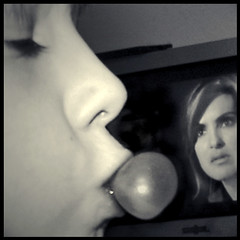 I‘m participating in a Webinar this afternoon hosted by my long-time friends and partners at Clickability. The Webinar is all about storytelling in the age of social media, or to be more pithy, how content is still king. This is hallowed ground for me. I got my degree in Creative Writing as an aspiring starving poet, but then became a journalist when I didn’t enjoy starving. My first startup was in Web-based publishing, and as a marketer I’ve leveraged my passion for writing to better understand the power of positioning and messaging. Today, SocialRep is all about gathering and making sense of consumer stories.
I‘m participating in a Webinar this afternoon hosted by my long-time friends and partners at Clickability. The Webinar is all about storytelling in the age of social media, or to be more pithy, how content is still king. This is hallowed ground for me. I got my degree in Creative Writing as an aspiring starving poet, but then became a journalist when I didn’t enjoy starving. My first startup was in Web-based publishing, and as a marketer I’ve leveraged my passion for writing to better understand the power of positioning and messaging. Today, SocialRep is all about gathering and making sense of consumer stories.
My perspective on content today is shaped by what’s happening to the structure of media. I’ve been hammering this concept of the media bubble and how it’s bursting, and content is one of the main issues at play. Think about the media structure we’ve grown up with: a monolithic media edifice in which a cohesive story–whether news, PR or advertising–is researched, baked and transmitted like a surging tide over the accepting audience. All of our business infrastructure is built around this edifice, rather than the customers who buy our products. Advertising isn’t about relationships with customers, it’s about relationships with media buyers and media channels. PR is about relationships with analysts and reporters. To the extent that we incorporate customers into the story, it’s either petri-dish research into demographics and psychographics, or convenient case studies that exemplify our storyline.
All of that is changing, for reasons I won’t rehash, but you can read about in the media bubble post. The point for businesses today is twofold: 1) barriers to business are reduced by technology and increasing global competition, which means more competition for customer attention, 2) big media is faltering, which means the channels for telling the story the way we’re all used to are narrowing.
The simple fact is that companies can no longer rely on getting their story out to consumers effectively through the old media channels. Getting your story out through social media is rapidly growing alternative, but it doesn’t function the way businesses are organized to operate. You can’t just bake a story and hit “send” and expect that consumers will digest it. They’re more likely to challenge it, and call BS on every little point of convenient spin you’ve so carefully crafted. Instead, companies need to live their stories, and they need to take ownership of their own storytelling.
I won’t take the wind out of the Webinar. We’ll be talking about content in the context of social media, including marketing and selling processes and of course, technology. Robert Carroll, VP of Marketing from Clickability is hosting, and I’ll be joined by Sandy Carter, VP from IBM, and Eloqua’s CTO, Steven Woods. You can find a link to the Webinar, including on-demand viewing after today, at Clickability’s site.
Photo Credit:goldsardine
